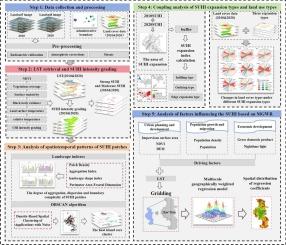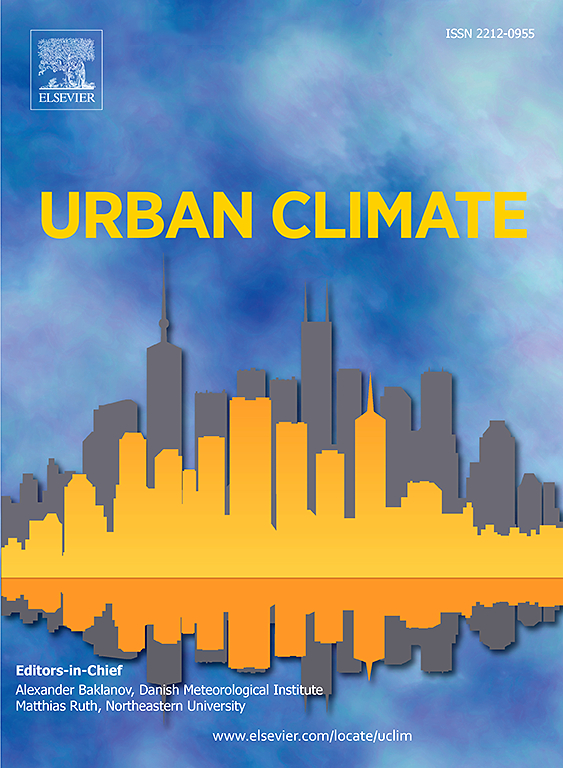中国长江中下游八个炉城的 SUHI 演变特征及影响机制
IF 6
2区 工程技术
Q1 ENVIRONMENTAL SCIENCES
引用次数: 0
摘要
城市地表热岛效应(SUHI)对城市可持续发展和城市宜居性提出了严峻挑战。目前的研究缺乏从新老火炉城市的角度对热岛效应进行分析。本研究以长江中下游 8 个火炉城市为研究对象,探讨了 2010-2020 年热岛的时空特征和影响机制。实践证明,DBSCAN 能够有效地探索热岛核心的数量和位置。此外,还利用 MGWR 模型分析了主导因素的空间异质性。结果表明(1) 热岛面积呈上升趋势。2)热岛斑块逐渐聚集。8 个炉城的热岛核心区呈现出增长型、稳定型和下降型三种类型。(3)热岛扩张类型以边缘扩张为主。农田向建筑用地的转化贡献最大。(4)不透水表面积、国内生产总值和人口密度是加剧 SUHI 效应的三大因素。研究结果为制定合理的城市热岛减缓策略提供了科学依据。本文章由计算机程序翻译,如有差异,请以英文原文为准。

SUHI evolution characteristics and influencing mechanism of eight furnace cities in middle and lower reaches of Yangtze River, China
The surface urban heat island (SUHI) effect poses severe challenges to urban sustainable development and urban livability. Current studies lack the analysis of heat island effect from the perspective of new and old furnace cities. In this study, spatiotemporal characteristics and influencing mechanisms of heat islands were investigated in eight furnace cities in middle and lower reaches of Yangtze River from 2010 to 2020. DBSCAN was proven effective in exploring the number and location of heat island cores. Besides, MGWR model was utilized to analyze the spatial heterogeneity of dominant factors. The results indicate that: (1) The area of heat islands showed an increasing trend. The increase rate in new furnace cities was faster than that in the old. (2) The heat island patches had gradually gathered. The heat island cores of eight furnace cities showed three types of growing, stabilizing, and decreasing. (3) The expansion type of heat islands was mainly edge expansion. The transformation of farmland into built-up land made the most significant contribution. (4) Impervious surface area, gross domestic product, and population density were the top three factors intensifying the SUHI effect. The results can provide a scientific basis for formulating reasonable urban heat island mitigation strategies.
求助全文
通过发布文献求助,成功后即可免费获取论文全文。
去求助
来源期刊

Urban Climate
Social Sciences-Urban Studies
CiteScore
9.70
自引率
9.40%
发文量
286
期刊介绍:
Urban Climate serves the scientific and decision making communities with the publication of research on theory, science and applications relevant to understanding urban climatic conditions and change in relation to their geography and to demographic, socioeconomic, institutional, technological and environmental dynamics and global change. Targeted towards both disciplinary and interdisciplinary audiences, this journal publishes original research papers, comprehensive review articles, book reviews, and short communications on topics including, but not limited to, the following:
Urban meteorology and climate[...]
Urban environmental pollution[...]
Adaptation to global change[...]
Urban economic and social issues[...]
Research Approaches[...]
 求助内容:
求助内容: 应助结果提醒方式:
应助结果提醒方式:


